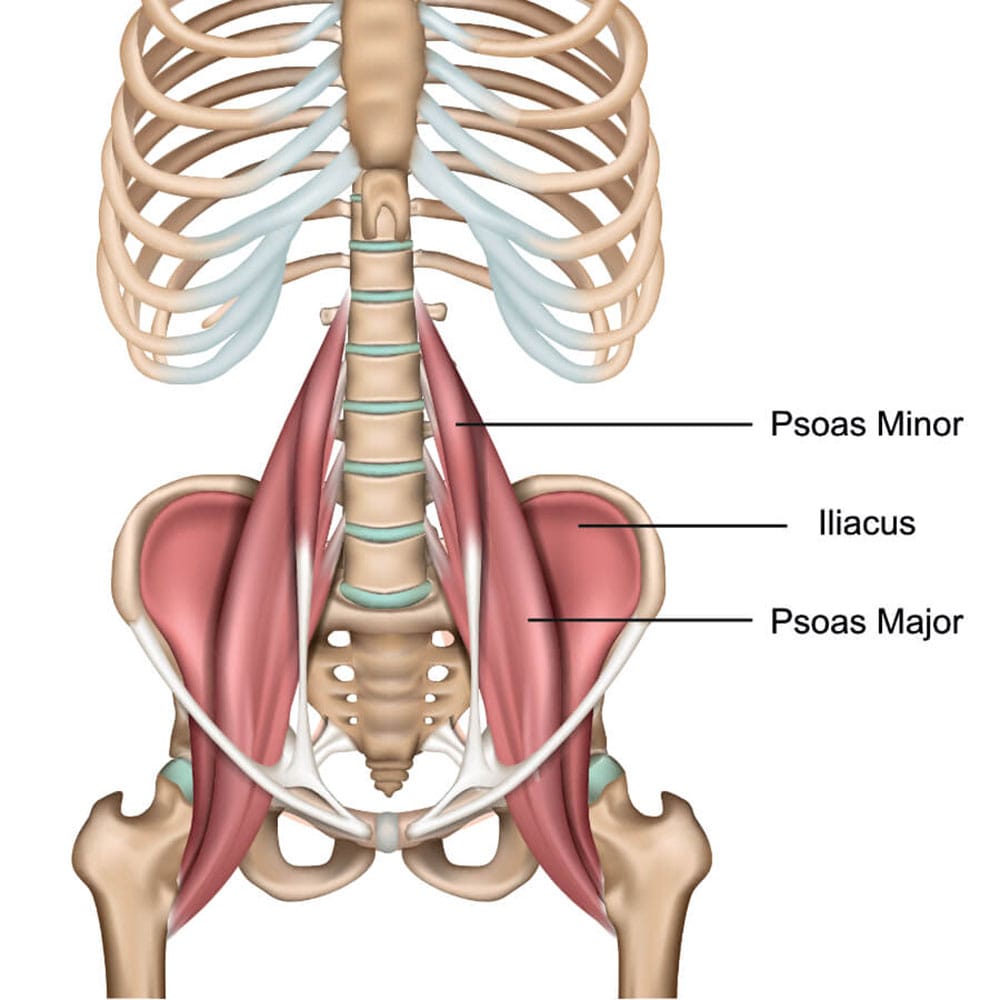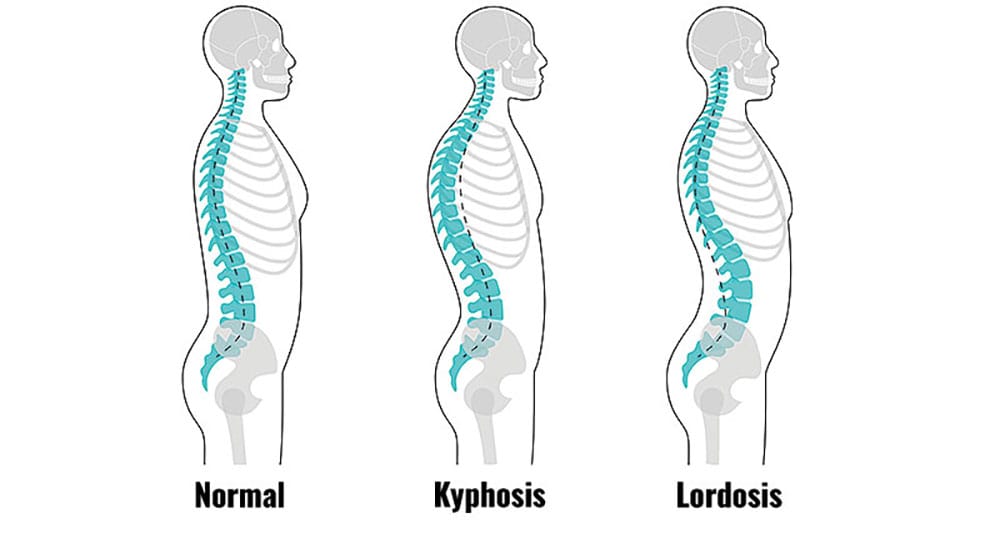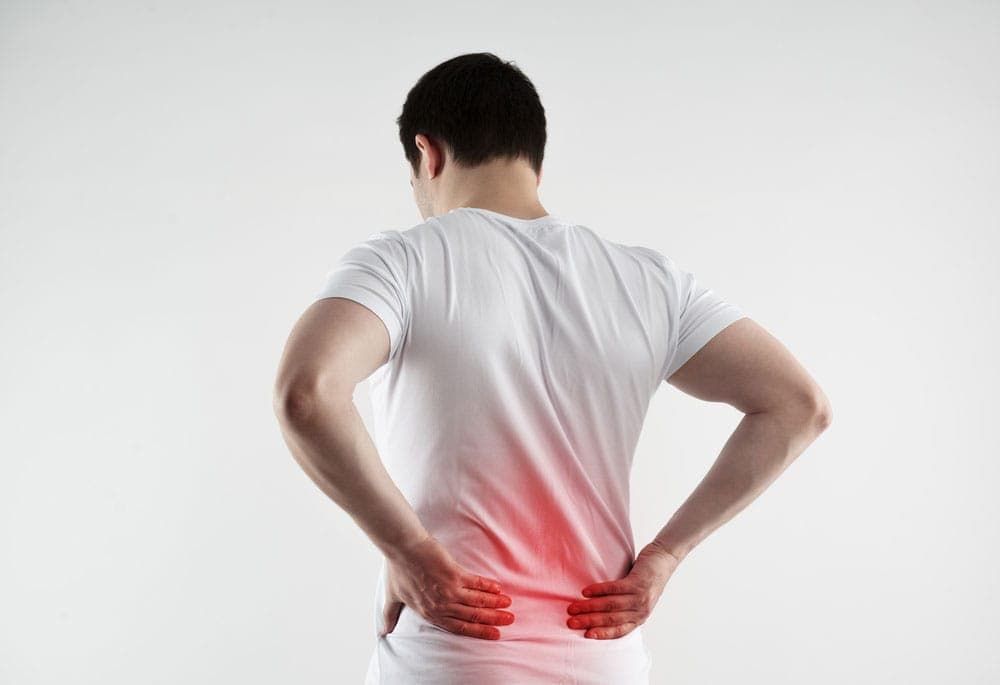All About the Psoas Muscle: Psoas Exercises for Pain Relief
Have you ever heard of the psoas muscle? Get to know this muscle and learn psoas exercises you can do at home to relieve tightness.
Ever had that annoying lower back pain that just won't get better, no matter what you try? And do you catch yourself struggling to stand up, walk, or even bend over? Well, one sneaky reason for all this trouble could be a weak psoas muscle.
This muscle isn't as famous as the glam muscles like the glutes or biceps, but this unsung hero is a big deal for our bodies. The psoas muscle is the secret sauce that lets us flex our hips and pull off those waist bends with ease. Plus, the fact that we have a stable core that doesn’t lose balance all the time is mostly thanks to the efforts of this big muscle in our body.
Since the psoas muscle is important, we must take care of it. But our lifestyle might get in the way of doing that. Whether we have to sit at a desk for long hours or move around a lot, we might unintentionally strain or tighten our psoas muscles. To tackle the toll of the modern lifestyle, there are some psoas exercises that can ease the tension.
In this read, we're laying out all the details about the psoas muscle – where it hangs out, its job, and the deal if it decides to go a bit weak on us. Ultimately, we’ll teach you some easy psoas stretches and exercises to help you strengthen the psoas muscle.
What Are the Psoas Muscles?
Generally, when people talk about the psoas muscle, they’re actually referring to the iliopsoas muscle. The iliopsoas muscle is not a single muscle; it’s composed of two different muscles: the psoas major and the iliacus.
How do these muscles get together? The psoas major starts somewhere in the lower back, called the lumbar vertebrae. From there, it goes down to the pelvic area. It meets with the iliacus muscle at the external edge of the pubis. When these two muscles join, they travel to the long bones in your thighs called femurs.
As we said earlier, the iliacus muscles are located on the pelvic bone. The iliacus are two muscles on each side of the body that have the shape of a triangle. They cross the hip joints and join with the psoas muscles at the inguinal ligament (near the groin area). Together, they extend to the femurs.
The psoas muscle has another part: psoas minor. It’s a small fusiform muscle located anterior to the psoas major muscle in the lower back. It accompanies the psoas major to the inguinal ligament but doesn’t go beyond that point. However, we are not discussing this muscle because only about 60% of the population has it.
Psoas minor is responsible for functions such as the flexion and stabilization of the lumbar spine. In the case this muscle is absent from an individual’s body, these functions will be performed by other muscles in the area. So, if you’re one of the people who don’t have it, it’s perfectly normal and your body can still function properly.

What Does the Psoas Muscle Do?
The psoas muscle has two main functions in our body: flexion and stabilization. Let’s see what these functions mean for us.
Hip Flexion
Being an important hip flexor, the psoas muscle is responsible for hip flexion. This movement involves bringing your thigh to the abdomen. Think about it – that happens A LOT every day!
When you’re walking, each step involves lifting the foot off the ground and bringing the knee forward. When you’re climbing steps, you need a significant degree of hip flexion to perform the movement. Additionally, sitting down requires that you flex your hips. You can see how we would be basically motionless without hip flexion, but that’s not all.
If you’re an active person who works out and hits the gym regularly, you’re going to need hip flexion desperately. Squats and lunges are two important exercises that require hip flexion, as does biking.
When you pedal you need to bring your thigh up, thus hip flexion. If you’re a dedicated yogi, you should be aware that many yoga poses involve hip flexion to varying degrees.
Lumbar Spine Flexion
Lumbar spine flexion is another movement in which the psoas muscle plays a key role. This movement involves bending forward and is essential for anything that requires bending at the waist. We need lumbar spine flexion for many daily activities. Examples include bending over to pick up objects, doing household chores, and tying your shoes.
Additionally, many popular exercises or stretches involve bending at the waist. Therefore, lumbar spine flexion is also important for athletes.
Spinal Stability
The psoas muscle stabilizes our spine. The psoas major is widely known for its ability to provide stability in our lower back. That’s why we can stand upright and walk without falling down. However, this doesn’t mean that having a strong psoas muscle is enough for a perfect posture. Rather, the psoas muscle helps keep our spine in its normal form and prevents it from curving.
Let us illustrate this with an example: Imagine that you have lordosis, which is an excessive curvature in the lumbar spine. Research suggests that the psoas muscle knows how to adjust its tension so that your spine preserves its natural curve. Plus, it’s smart enough to consider external factors such as posture or muscle activity to help your spine keep its normal form. What does this mean? It means that a strong psoas muscle isn’t going to treat lordosis and give you a straight back. However, if you have a problem like lordosis, it keeps it from getting worse.

Assisting in Abdominal Organs' Function
The psoas muscle is a large one, and it’s located near important organs, such as the stomach, small intestine, and colon. When this muscle becomes tight or bloated, it can affect these organs’ function and put pressure on them. In severe cases, this tightness can lead to issues such as bloating, heartburn, and constipation. Performing psoas release exercises can help alleviate the tightness.
This relationship can be the other way around too. Since the psoas muscle is so close to internal organs, it can be affected by them. For instance, conditions such as Crohn’s disease or appendicitis can spread infection to this muscle. This will result in the abscess of the psoas muscle, which manifests as swinging fever and abdominal pain.
Breathing
When we think of the psoas muscles, breathing is not the first thing that comes to mind. In contrast, discussions about the diaphragm often center around respiratory functions. As we know, the diaphragm is a large muscle located at the bottom of the lungs. This muscle plays a key role in the respiratory system. The diaphragm and the psoas major are linked together via a structure called the medial arcuate ligament. That's why some studies indicate that the psoas major can influence breathing mechanics.
The proximity of the psoas muscle and the diaphragm makes researchers believe that the psoas muscle can influence not only breathing but also vocal expression, such as the ability to sing and speak. However, more research is required to validate this hypothesis.
What Happens if You Have a Weak Psoas Muscle?
The psoas muscle plays a key role in our core stabilization and balance. So, when you have weak or tight psoas muscles, you will experience imbalances in the pelvic region, which affects alignment and increases the risk of injury. Tight psoas muscles also create lower back pain. Plus, a weak psoas muscle can lead to poor posture and lack of spinal stability. Considering that major movements are fueled by this muscle, you will also have trouble flexing your hip or waist. Simple movements such as walking or picking objects up will turn into a struggle.
A tight psoas muscle is usually a result of a sedentary lifestyle. Sitting down for long hours shortens the muscle, leading to muscle tightness. On the other hand, intense physical activity, sudden movements, and trauma can injure the muscle and lead to pain. Performing psoas muscle exercises can address the tightness, help with rehabilitation, and relieve the pain.
Psoas Exercises
A tightness in the psoas muscle usually manifests with lower back pain, constipation, shallow breathing, and difficulty standing straight. If you suspect having an injured psoas muscle, it’s best to consult with a healthcare practitioner. However, if you have to sit at a desk for long hours every day or engage in heavy physical activity, psoas muscle exercises can help you stretch the muscle and relieve the tension. Here are some easy psoas stretches and exercises you can do at home:
Lunge Stretch
To perform lunge stretches, stand straight with your feet together. Then, take a large step forward with one leg. Slowly bend both your knees and lower your body. Make sure to keep your balance and avoid leaning forward. Lower your body until your back leg touches the ground. Your front knee should be exactly above your ankle. Keep your hips square, ensuring both hips are at the same level and facing forward and not tilting to one side. If you can, push your hips down a bit more. Hold the position for 30 seconds and slowly come up. Then, switch legs and do the same thing.
Frog Stretch
The frog stretch is a great psoas exercise that requires some degree of flexibility. Sit down on a soft surface, such as a blanket or a yoga mat. Get on all fours and slowly widen your knees. Only go as far as you can without feeling pain. Flex your ankles in a way that your inner ankles and inner knees touch the floor. From there, slowly lower onto your forearms as far as you can. Hold the position for a few moments. Then, slowly bring your knees back together and return to the initial position.
Bridge
Bridges are one of the exercises that people do at the gym to grow their glutes. However, done without weights, it can also be considered a psoas muscle pain relief exercise. To do bridges, lie on your back and bend your knees. Open your legs hip-width apart. Keep your arms at your sides with palms facing up or down. Activate your core muscles to support and steady your spine. Take a deep breath and slowly raise your glutes by pressing your feet into the floor. Go up until your body makes a straight line with your shoulders. Hold the position for a few seconds and slowly come down.
Standing Psoas Mmarch
This is a great psoas exercise as it works the primary function of the psoas muscle, which is hip flexion. To do a standing psoas march, start in an upright position facing a wall. Your feet should be hip-width apart. Lean against the wall until your hands are straight and your body slightly leaning forward. Slowly lift one knee towards your chest. You should aim to lift it to hip height but only go as high as comfortable without straining. Keep your supporting leg straight, but don’t lock your knee. Focus on keeping your pelvis straight and avoid tilting it to the side. Lower your leg slowly and perform the same movement with your other leg. You can also do this exercise with a resistance band to increase the stretch.
Bottom Line
The psoas muscle plays a key role in facilitating movement in the human body. The psoas release exercises we introduced earlier work the muscle and help strengthen it. To see optimal results, make sure you perform these exercises regularly. Additionally, try to avoid sitting down for long hours. It’s generally recommended to stand up and take a brief walk after 45 minutes of sitting.
Our bodies are pretty intricate. Navigating the journey towards health and strength takes some know-how. Flex A.I. is a fitness and health app that's got your back on this wellness adventure. It hooks you up with custom workout plans and tips on shedding those extra pounds. It also lets you keep tabs on your progress. Download the app for free to get started.
Related articles


Get fit with Flex
Build muscle & lose weight fast for free.
Available on iPhone + Apple Watch





